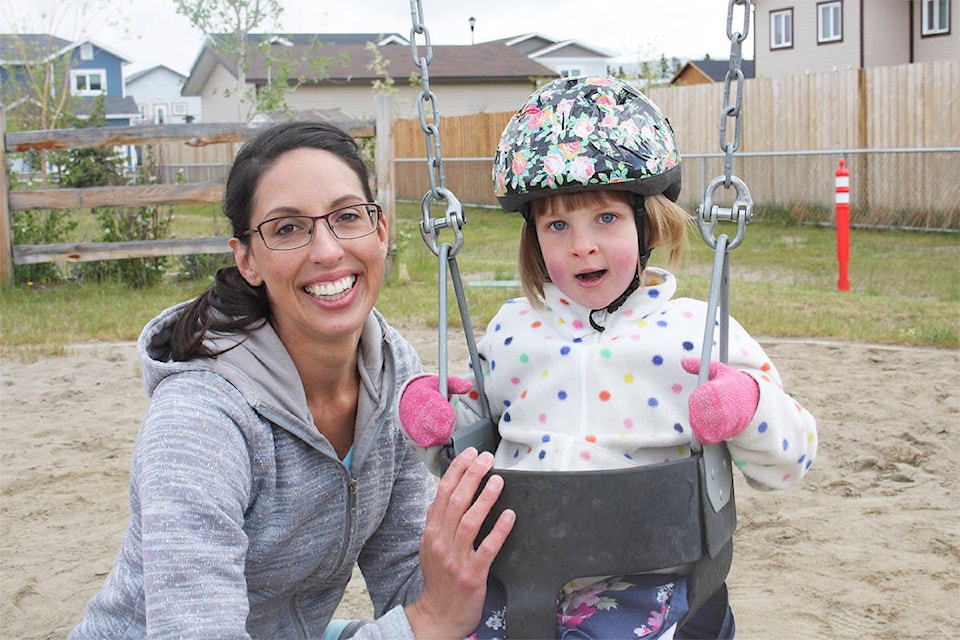It’s a beautiful day in the neighbourhood…
But there’s still roads to build, residents moving in, a commercial centre to add and more planning to come.
Whitehorse city council is poised to vote June 10 on first reading of zoning for Whistle Bend’s Phase 7, the final phase of planned residential development in the neighbourhood.
At the same time officials with the city and Ta’an Kwäch’än Council (which has settlement land in the area) are looking at the future of the few remaining unplanned parcels while the Yukon government develops Phase 4 with lots anticipated to be available later this year.
The work is part of a broader neighbourhood master plan developed through a City of Whitehorse process in 2009, long before any residents lived there.
“The main concepts of a dense, walkable urban neighborhood have not changed,” city spokesperson Myles Dolphin said. “Road layout/housing types have been adjusted over time to provide efficiency of infrastructure development and respond to market demands in different phases.”
The overall projected population at full development remains at 8,000 living in 3,500 units throughout the neighborhood, though that could increase as more work is put into the unplanned areas.
The master plan doesn’t deal with housing prices, but over the years there’s been a focus on the need for new lots throughout Whitehorse for all housing types - supportive housing, affordable and market rentals, and home ownership - as costs have increased.
Despite adding lots through development of Whistle Bend, where 1,500 residents now live, housing prices have continued to increase for both renters and buyers.
The Yukon Bureau of Statistics first included Whistle Bend in its real estate stats in the second quarter of 2014 when five single detached homes were sold in Whistle Bend at an average price of $357,700. Overall in Whitehorse at that time the average price was $425,000 with 76 single detached homes sold throughout the city.
The most recent stats from the fourth quarter of 2018 show 13 single detached homes sold in Whistle Bend at an average of $509,600. Overall Whitehorse figures for the same period show 65 homes sold for an average price of $506,200.
Meanwhile, rental stats show the median rent in Whistle Bend in October 2016 as $988 for a one-bedroom, $1,625 for a two-bedroom and $1,850 for three or four bedroom units with seven buildings having rental units.
By comparison, the October 2018 median figures for the neighbourhood were up to 13 buildings with rental units at $1,054 for a one bedroom, $1,750 for a two-bedroom and $1,950 for a three or four bedroom.
The statistics aren’t clear on what type of buildings offer rentals.
Among the Whistle Bend rental stock is the River Bend development, which welcomed its first 14 families living there in 2017. The project is a collaboration of the Da Daghay Development Corp. and the Ta’an Kwäch’än Council, which owns the development corporation.
Eventually it will feature three buildings with 42 one to three bedroom units.
On the more affordable home ownership front are projects by Habitat for Humanity, with the Yukon government providing lots to the organization in new subdivisions.
Habitat, which builds affordable homes purchased by families who may not qualify for a traditional mortgage, already built a duplex in the neighborhood with another underway.
Even with the high housing demand, there are still few multi-residential lots sold to developers in the Phase 1 that have yet to be built on, Whistle Bend Community Association president Katherine Williams pointed out.
She understands the territory’s desire to sell the multi-family lots and thus not put any building time restrictions on them, but it leaves gaps in the neighbourhood where new homes could be built.
Williams and her family moved to the neighbourhood in 2015.
“It felt welcoming the way it was designed,” she said.
Housing is zoned in a way that neighbours see each other out and about regularly, there’s extensive pathways to bike and walk and as a growing neighbhourhood there’s potential opportunities to be part of planning future phases.
However, there remains a number of issues.
An active transportation network already runs through the neighbourhood with paved trails, but getting out of the neighbourhood by bike or on foot is another matter, Williams said.
A mother with young kids, she said she doesn’t want to be a taxi service for her kids when they’re teenagers. Rather she envisions them hopping on their bikes to get to school or extra-curricular activities. As it stands now, that would mean biking or walking along the busy road out of the neighborhood to Mountainview Drive, which isn’t always a safe option.
“We’re almost like an island,” she said.
There is transit, though right now it’s limited with bus service directly into Whistle Bend at Casca Boulevard and Olive May Way offered only Monday to Friday hourly between 7:10 a.m. to 7:10 p.m.
Dolphin said the city added service to the neighbourhood to keep up with the demand of a growing population, beginning with a route offered only during peak periods, eventually adding the more full schedule through the week.
There is little doubt the majority of residents still rely on their own vehicles. Williams said she has seen the number of personal vehicles parked on the street (another issue that she sees looking at) and driving in and out of the neighbourhood grow.
An upcoming city-wide transportation study will explore Whistle Bend as well as other parts of the city.
“The plan will consider Whistle Bend’s existing and projected transportation needs,” Dolphin said. “The intent for the neighborhood is to provide employment and services in the neighbourhood to reduce the overall number of trips downtown.”
A future commercial core and public buildings including the existing continuing care facility and future school will be part of that.
The territory has indicated to the community association an advisory council will soon be formed to begin planning for the school.
“There’s so much potential,” Williams said.
Contact Stephanie Waddell at stephanie.waddell@yukon-news.com
